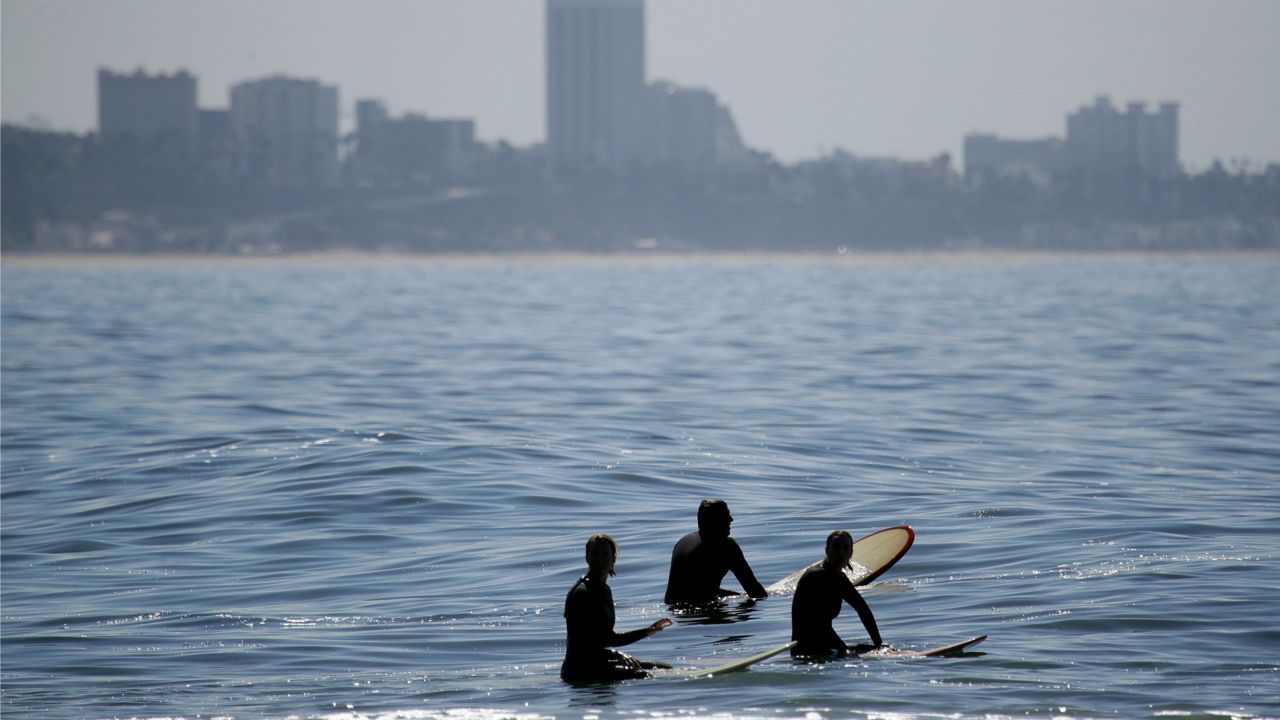California’s beach water quality improved slightly over the last year, according to a 2019-2020 Beach Report Card from Heal the Bay, released on Tuesday. The Santa Monica-based non-profit is dedicated to improving coastal waters along the Pacific Ocean.
The reason why water quality improved is owed to less rainfall in its coastal areas than the historical average. Rain along the coast generally means that street-level pollutants will be washed into storm drains and out into the ocean, which can put swimmers at a greater risk of contracting illnesses.
This year, 92 percent of the California beaches monitored by Heal the Bay were given A or B level grades for the summer season. Los Angeles County beaches graded well during the summer and winter, as at least 91 percent of local beaches earned top grades. The story flips for wet weather grades, with only 42 percent of beaches earning A or B level grades.
Three Los Angeles-area beaches made this year’s Honor Roll, noting consistently clean beaches, and all in the South Bay: Redondo State Beach, at Topaz Street, in Redondo Beach; and two beaches on the Palos Verdes Peninsula: Long Point and Palos Verdes Cove.
On the other end, the state’s worst-graded beaches are named in the report’s annual Beach Bummer list. This year, only Topanga Beach made the bummer list in Los Angeles County, owing to high amounts of animal fecal matter in the nearby Topanga Lagoon, which may flow into the ocean when breached.
Animal impacts like that are difficult to mitigate, Michael Tripp said. Tripp is the planning division chief at the Los Angeles County Department of Beaches and Harbors – one can’t necessarily legislate those impacts out of existence, he said, and other measures can impact endangered wildlife.
The county can make an impact by introducing other mitigation measures, like installing stormwater filtration systems. Or, in the case of Marina del Rey’s Mother’s Beach, by installing devices to help water circulation, not unlike the way waves in open beaches can help circulate clean water toward the beaches.
“Beaches weren’t always clean or safe for people to swim in; it wasn’t uncommon for people to get sick and be exposed to pollutants,” said Dr. Shelly Luce, CEO and president of Heal the Bay. Decades ago, there was no way for the public to know when and where there might be a higher risk for them to get sick by swimming in polluted water, which led to the publication of the first Beach Report Card, an annual publication now in its 30th edition.
“It’s a testament to how much people of California care about clean water that this report card has been supported for 30 years,” Luce said. Heal the Bay also helped draft 1997’s AB 411, statewide legislation that requires regular, frequent testing of beaches across the state. “This has had the ability to demonstrate when and where beach water was not safe to swim in, so we could take action.”
Having those reports, Luce said, can force local governments to take action and invest in cleaning up the beaches, or ensuring that that water runoff can be captured before it pollutes the ocean water.
Luke Ginger, Heal the Bay’s water quality scientist, said that runoff capture projects like the Santa Monica Urban Runoff Recycling Facility (or SMURRF) can pay great dividends to cities by both capturing runoff on its way to the ocean and then treating that runoff for other, non-potable uses, such as landscape irrigation.
The Santa Monica Pier has a history of being on Heal the Bay’s bummer list, and escaped it this year; though Ginger said it’s early to say that SMURRF is responsible for this impact, he seemed hopeful.
“We want to shed light on the solutions for cleaning water; capturing and reusing runoff will keep bacteria out as well as other contaminants,” Ginger said. “We want our beaches as clean as possible, but we want to make sure we’re using every drop of fresh water in as smart a way as we can be.”
Heal the Bay also celebrated adding three beaches in Tijuana, Mexico, to its report card list: El Faro, El Vigia, and Playas Blanca, which are all popular with locals and tourists alike.
“Showing the integration of what is happening on both the U.S. and Mexican portion of our watershed is a long overdue requirement for understanding environmental health issues, particularly as they relate to water quality in our shared watershed,” said Margarita Diaz, director of Proyecto Fronterizo de Educación Ambiental.
Lastly, the report touched on the impact of the COVID-19 pandemic on the beaches, arguing that major systemic failures have been exposed, especially beach access.
“The initial safer-at-home orders closed all beaches to prevent crowding because so many people sought the open space and the peace of mind that our coast and ocean provide,” the report said. “Coastal access was restored unevenly across the state and in many cases, parking and restrooms remained closed, limiting visits by people who do not live near the coast. This pandemic experience is a reminder of why it is so important to protect our clean water and beach access everywhere.”



